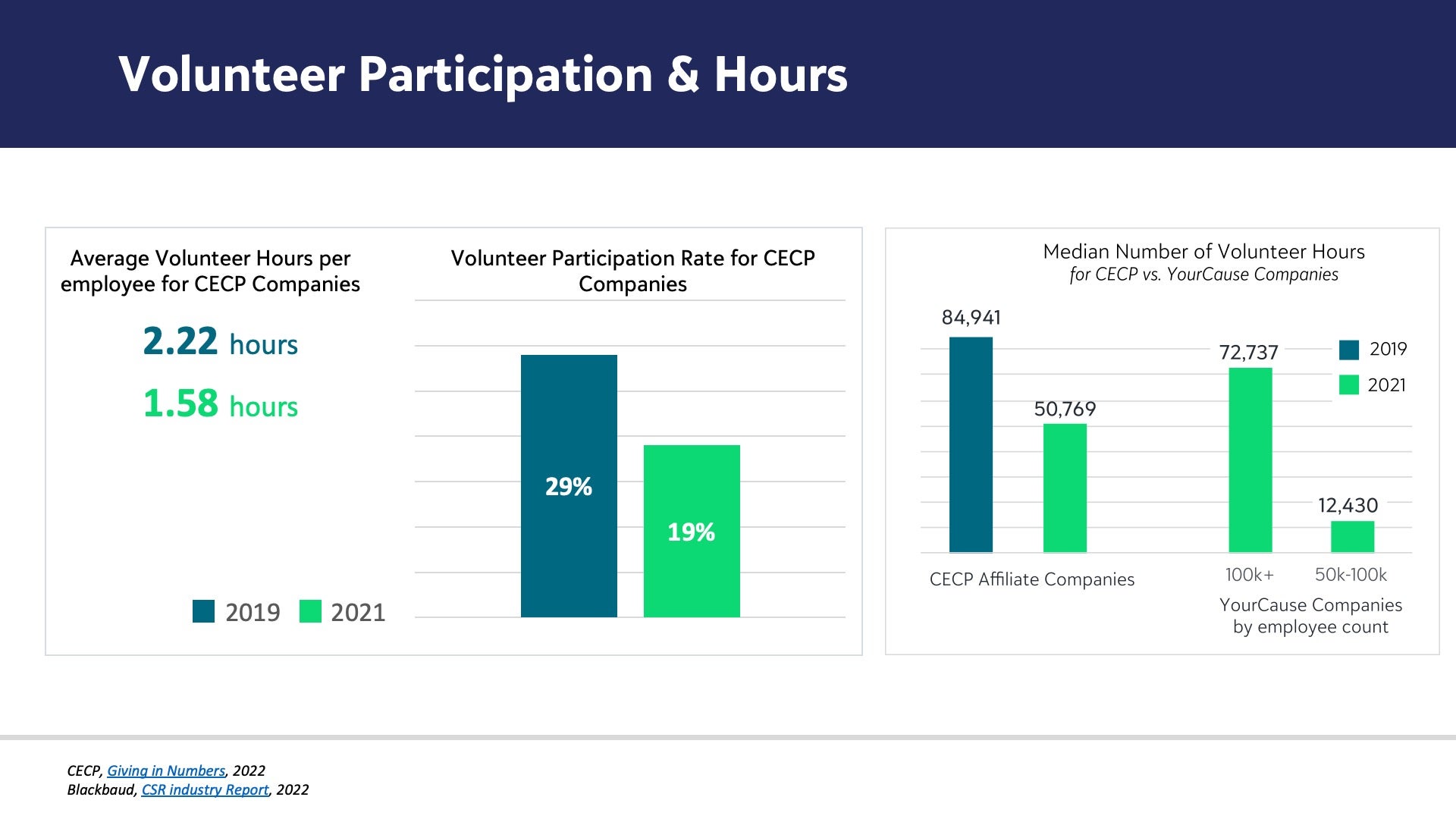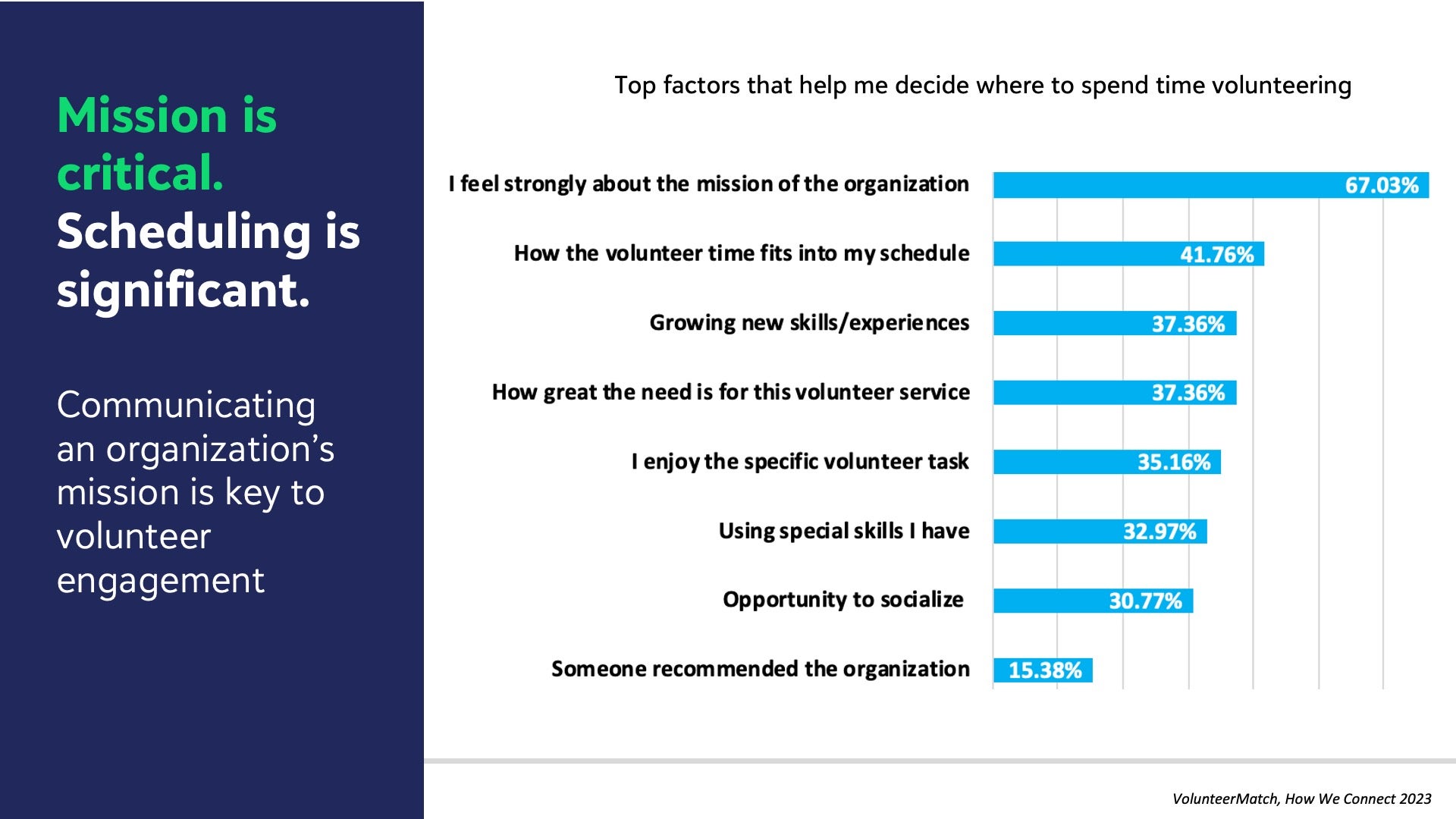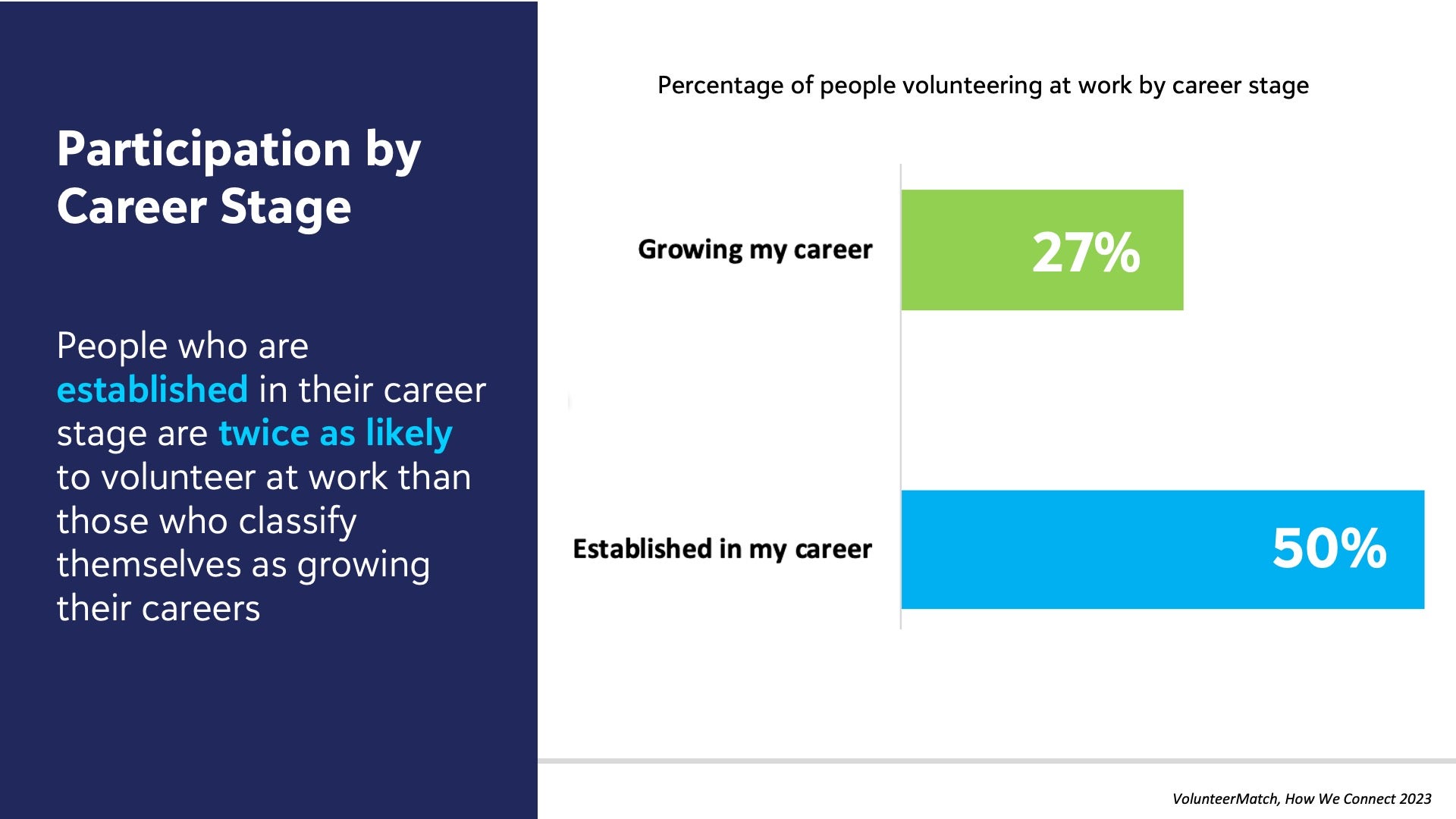Changing Landscape of Volunteerism: Part 2
Adapting to Trends
During our Social Impact Workshop in Los Angeles, we invited Rachel Kestner (Vice President of Marketing at VolunteerMatch) and Lacey Gaitan (Vice President of Content and Learning at ACCP) to lead a session on how companies can use trends in corporate volunteerism to evolve their programs. This blog overviews the trends discussed and links to the presentation and resources Lacey and Rachel shared during the event.
Community needs have shifted, employee expectations are changing, and even what companies may count or define as volunteerism varies. One size doesn’t fit all, but there are helpful trends companies can use to understand better how to shape employee volunteer programs.
These trends in volunteer participation could be connected to a strain of empathy, from people feeling farther apart and less connected. The problems from the pandemic and other rising social issues around LGBTQ rights, gun control, racism, the war on Ukraine, or other crises can bring out extremism and polarizing views on how people and companies should or should not be responding.
Here are a few data points that reveal this strain on empathy. An Angus Reid Poll showed this strain in empathy from the pandemic, with an overwhelming majority (82%) believing it has pulled people apart rather than brought them together. Data from the 2023 Edelman Trust Barometer reports 53% of respondents globally say their countries are more divided today than in the past.
However, the Edelman Trust Barometer also shows that business is the only institution seen as competent and ethical. Before we look at data for what drives people to volunteer and ideas for expanding opportunities for engagement, let’s remember the volunteer campaign, Volunteering is Empathy in Action
Volunteer Trends and Data
Nearly half of US companies offer some form of employee volunteering1, 1/3 of Canadians have support from their employer to volunteer2, and companies in the Global Good Network have employees that engage in social impact from over 100 countries3. Yet, data shows that employee participation in volunteering and time spent volunteering has yet to recover to pre-pandemic rates. The graph below shows volunteer participation rate and median hours from 2019 to 2021 from the CECP Annual Giving in Numbers Survey compared to companies from the Global Good Network evaluated in the YourCause 10th Annual CSR Industry Report.

Data like this likely surfaces many questions for CSR leaders such as:
-
Do people just have less time to give? Or are they less inspired?
-
How can we show the value of our programs to get people volunteering again?
-
Are we offering the right incentives that motivate people to participate?
“This lack of trust in societal institutions has brought us to a deeply and dangerously polarized and weakened social fabric.”
“Volunteering Is Empathy In Action, affirms the strong connection between volunteerism and empathy. This profoundly human connection is at the heart of healthier individuals and stronger communities. Empathy is a quality that can help people relate to others and build awareness around different experiences. It connects people in ideas and actions and helps create bonds forged in common goals and aspirations. Volunteering can help us develop empathy, to see the world through the eyes of others. It can connect people from diverse backgrounds and life experiences, expanding our views. It can build our capacity to work collectively and contribute to a vibrant, inclusive society.”
How We Connect | A look at what drive people to volunteer
VolunteerMatch surveyed over 1,000 volunteers to equip nonprofit organizations with data to understand their motivations, preferences, and goals. In the same way that nonprofits can use this information to adjust their recruiting strategies, companies can adjust their employee volunteer programs. This data shows how people crave more than just the satisfaction of lending a hand, they want to experience personal growth, make meaningful connections and enact real change.
Mission is critical.
Respondents were asked the top factors for how they decide to spend time volunteering, and 67% of respondents reported their leading factor is that they feel strongly about the organization’s mission. Building this connection to a cause won’t happen overnight. Chris Jarvis (Executive Director of the Realized Worth Institute) talks about this significant shift for social impact programs to move from the idea of helping to belonging, working towards building a real connection with a community.
“The problem with a posture of helping is that it positions one party in power over the other. It says, “You need what I have.” If we want to build scalable programs led by committed volunteers who achieve meaningful impacts, we cannot posture ourselves as the savior swooping in to help the needy. Social impact results from building relationships, knowing each other, breaking down barriers. Communities are people, not projects.”
The How We Connect survey supports this idea, with 74% of respondents reporting they volunteer to make a difference in their community and 58% because they want to contribute to a cause they care about.
Scheduling is significant.
As you craft your volunteer programs, consider the schedules for employees by career stage. 41% of respondents reported the top factor for deciding where to spend time volunteering was how the time fit into their schedule. The survey showed people age 35-44 volunteer less, which makes sense considering these years are likely filled with time spent raising families and/or growing careers, while people who are established in their career stage are twice as likely to volunteer.
The graphs below show the top factors chosen and the percentage of people volunteering at work by career stage.


Expanding Opportunities for Engagement
Lacey shared examples of how companies are using positive actions alongside learning opportunities to empower their people to give back and expand the opportunities for employee engagement with community service. These activities include acts of kindness, micro-learning, virtual volunteering, skills-based volunteering, group and individual volunteering.
One example from the Global Good Network of a volunteer program that includes more than just activities with traditional 501(c)(3) nonprofit organizations is Columbia Bank’s employee engagement program. Columbia Bank was featured in the latest issue of the CSR Industry Review as the company with the highest combined engagement rate for companies with 0-1,000 employees. They use CSRconnect to manage employee engagement activities, whether it’s traditional volunteering with registered 501(c)(3) nonprofits, volunteering in local schools, or participating in community events around the holidays, and cleaning up trash on the Jersey Shore. Their Vice President Community Development Officer provides some great examples of the expansive opportunities within their employee engagement program.
“One example of a community service activity that our employees were really passionate about was beach cleanup along the Jersey shore. Although this event wasn’t tied to a specific nonprofit, our employees enjoyed picking up trash to keep their community clean. This event created a connection to supporting the environment and the ocean animal wildlife.”
Lacey and Rachel concluded the presentation with a few keys to success for creating, managing, or growing corporate volunteer programs.
-
Do your researchon which programs are needed by your nonprofit partners and what types of volunteer options are best suited for your company culture.
-
Have a clear vision.That means knowing what you want to change, focusing on the vehicles and the destination. The volunteer activity is just one vehicle that can help you reach your destination of social change.
-
Find the most passionate people in your organization and give them the opportunity to help shape and lead the charge within your program. You really need ambassadors to get people motivated and to lead.
-
Give employees a voice in the process.If you just set up one day of service and ask your employees to volunteer that may not lead to the results you want.
You can download a pdf of the full presentation from the Los Angeles Social Impact Workshop and access the links to all the resources that Lacey and Rachel shared during the event.
Resources
- Presentation
- 2022 CECP Giving in Numbers Survey
- 2022 YourCause Industry Review– insights were shared from the 2022 issue during the event. The 2023 issue is now available
- Latest YourCause Industry Review – 2023 Issue
- How We Connect Research
References:
- Society for Human Resources
- Volunteer Canada
- YourCause CSR Industry Review